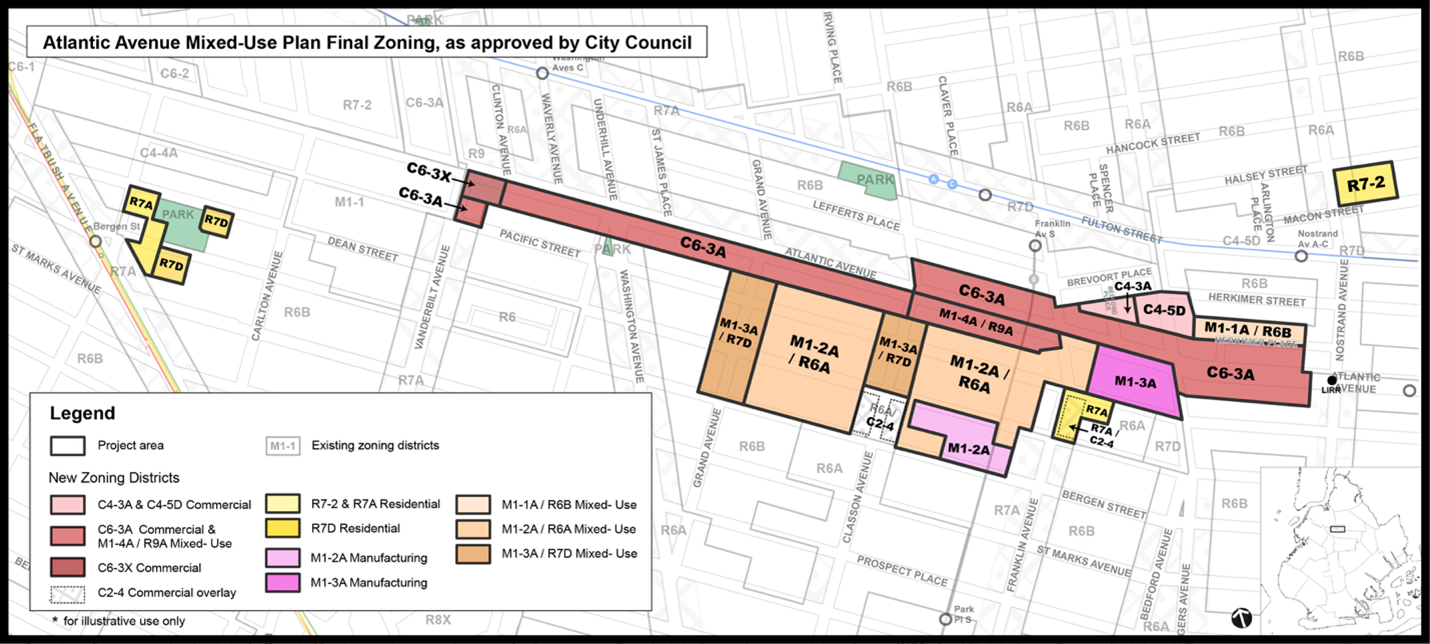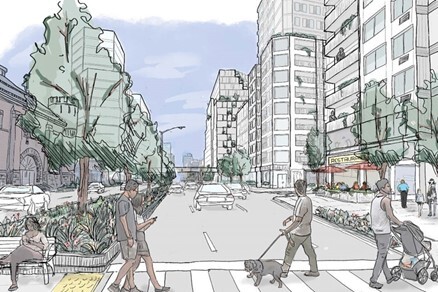New York Construction Report staff writer
The City Council has approved the Atlantic Avenue Mixed-Use Plan, unlocking a long-dormant stretch of Brooklyn for transformation into a more livable, connected, and affordable neighborhood. The plan, centered on a 21-block corridor between Vanderbilt and Nostrand Avenues, will bring 4,600 new homes, 1,900 of them income-restricted, and 2,800 permanent jobs to Crown Heights and Bedford-Stuyvesant.
The rezoning marks a major shift for an area that, since the 1960s, has been zoned almost entirely for industrial use — a relic that has stifled housing development despite its location near transit and major job centers. New rules will allow mixed-use buildings with ground-floor retail, community space, and apartments — including affordable housing through the city’s Mandatory Inclusionary Housing program.

In addition to housing, the plan directs $235 million in city investment toward street redesigns, open space, and neighborhood infrastructure. This includes $135 million to make Atlantic Avenue safer for pedestrians and cyclists, and $100 million to renovate parks and playgrounds such as Hancock Playground and St. Andrew’s Playground.
The redevelopment will also breathe life into currently underused sites, such as 457 Nostrand Avenue and 1134-1142 Pacific Street, where affordable housing will be developed on city and nonprofit-owned land. Community organizations will receive funding to support anti-displacement work and tenant protections.
For businesses, the plan offers economic development support, with programs for local hiring, apprenticeships, and workforce training. A study is also planned to explore future uses of the Bedford-Atlantic Armory as a potential hub for job creation.
Infrastructure upgrades are another major pillar. Flooding will be addressed with stormwater detention systems, sewer upgrades, and 140 new rain gardens. The Franklin Avenue subway station, serving the A and C lines, will receive aesthetic and sanitary improvements. New zoning requirements will also mandate building setbacks that allow for wider sidewalks and more street-level greenery.
Beyond the zoning map, the plan represents a fundamental change in how New York City responds to its deepening housing crisis. Atlantic Avenue is the second neighborhood plan passed under the Adams administration, with three more proposed. If adopted, the full suite of rezoning efforts could yield more than 50,000 new homes across the city in the next 15 years.
For the communities along Atlantic Avenue, the rezoning ends decades of stagnation and opens the door to a more inclusive and better-connected future — one shaped by a mix of new residents, long-time neighbors, revitalized businesses, and shared public spaces.










